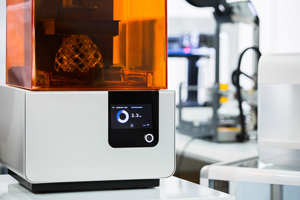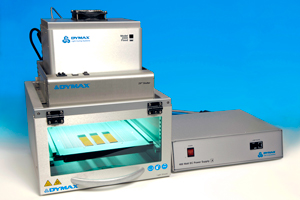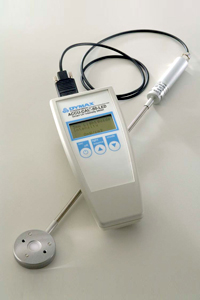
 The expansion of 3D printing into rapid manufacturing applications and strong market demand for next-generation oligomers, has been coupled with an increased demand for materials with a wide variety of physical properties. Rigid materials, with high tensile strength and low elongation, are readily available, but offerings of tough, flexible materials with high elongation are more limited.
The expansion of 3D printing into rapid manufacturing applications and strong market demand for next-generation oligomers, has been coupled with an increased demand for materials with a wide variety of physical properties. Rigid materials, with high tensile strength and low elongation, are readily available, but offerings of tough, flexible materials with high elongation are more limited.
Aside from the technical challenges of developing these types of materials, another potential source driving this limitation is the challenge associated with printing flexible parts with certain types of 3D printers.1 When the printing process involves movement of parts or printer hardware in the x or y direction, as it does with some SLA or DLP type printers, forces are exerted on the part in situ that could cause an overly flexible part to move out of alignment, separate from the build platform, or even break resulting in poor resolution and failed prints. Thus, in the development of new materials for 3D printing, especially flexible ones, it becomes important to evaluate how well the material can withstand these types of forces.
In a new study, and resulting white paper, the benefits of new oligomers are investigated in free-radical curing acrylate formulations and free radical/cationic curing acrylate/epoxy hybrid formulations. In addition, the mechanical and thermal properties of the formulations are revealed.
investigated in free-radical curing acrylate formulations and free radical/cationic curing acrylate/epoxy hybrid formulations. In addition, the mechanical and thermal properties of the formulations are revealed.
The purpose of this study had two major goals. The first was to evaluate the mechanical properties of newly developed (meth)acrylate oligomers that have the potential to meet the demand for tough, flexible 3D printing materials. This evaluation included a comparison to materials currently on the market that are advertised as being tough or flexible.
The second goal was to identify a method that would allow for an evaluation of the oligomers’ ability to resist the forces that act upon parts during the printing process. This resistance, in turn, relates to printability or the probability of having a successful printing outcome. For this latter goal, both relative rate of (meth)acrylate conversion and the change in the material’s complex modulus during cure were examined. These methods were used to evaluate how quickly the material’s green state properties were reached and whether those properties would meet a minimum threshold required to survive the printing process.
For this work, four urethane (meth)acrylate oligomers (UAO) of varying structures were synthesized to explore their suitability for use in 3D printing formulations, especially those designed to generate flexible shapes or parts. The oligomers were synthesized in 35-40% reactive diluent to produce a preformulated resin mixture and then further formulated into the model 3D printing formula found in Table 1 below.
Table 1.
Component | Wt% |
UAO | 55.0 |
Reactive Monomers | 40.0 |
Photoinitiator | 3.0 |
Additives | 2.0 |
Table 1: Model 3D Printing Formula
Three commercially available (meth)acrylate-based 3D printing resins (CR) were also examined for comparative purposes and were used as received. The viscosity of all resin formulations was measured using a Brookfield CAP2000+ viscometer at 25⁰C. Download the new white paper to see the full results of this study!
Light-Curing Equipment for 3D Printing Post Cure and Rework

UV Light-Curing Flood Lamp Systems
Dymax flood-lamp systems are designed for area curing or for curing multiple assemblies at once. These flood lamp models use a powerful UV light-curing lamp (up to 225 mW/cm2) for fast curing over a 5″ x 5″ (12.7 cm x 12.7 cm) area.
ACCU-CAL® Radiometers
Dymax UV/Visible radiometers are simple to operate and allow operators to monitor, document, and maintain a reliable light-curing process, measure transmission rates through substrates, and provide a worker-friendly light-curing environment.
Authors: James Aerykssen & Josiah Piceno / Dymax Corporation / Torrington, CT
Subscribe to Our Email Newsletter
Stay up-to-date on all the latest news from the 3D printing industry and receive information and offers from third party vendors.
You May Also Like
Wisconsin’s Evology Adds Digital Sheet Forming to Service Roster
Evology, a service bureau based in Wisconsin and specializing in serving strategic sectors like aerospace and defense, has added digital sheet forming (DSF) to its repertoire of manufacturing capabilities. Evology...
Boring Company Alum Score $9M for Advanced Composites Manufacturing
Layup Parts, a Huntington Beach, CA-based startup specializing in on-demand manufacturing of parts made from composites, has received $9 million in its latest financing round. Founders Fund, the VC firm...
Industrial Giant Ingersoll Rand Leads $19M Round Backing Inkbit’s AI-Driven 3D Printing
Inkbit, the Massachusetts-based original equipment manufacturer (OEM) of multi-material, AI-integrated 3D printers, has closed a $19 million financing round. Ingersoll Rand, a US giant in the industrial equipment sector, led...
3YOURMIND & Nigerian Oilfield Services Firm RusselSmith Team Up on 3D Printed Part Inventory
3YOURMIND, the German and U.S. software services provider specializing in digital inventory platforms for additive manufacturing (AM), has partnered with Nigerian oilfield services firm RusselSmith to digitize spare part files...


































